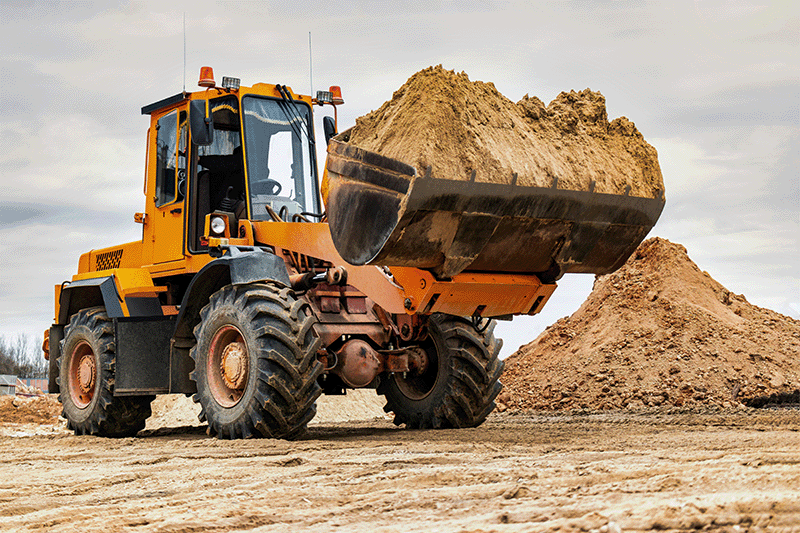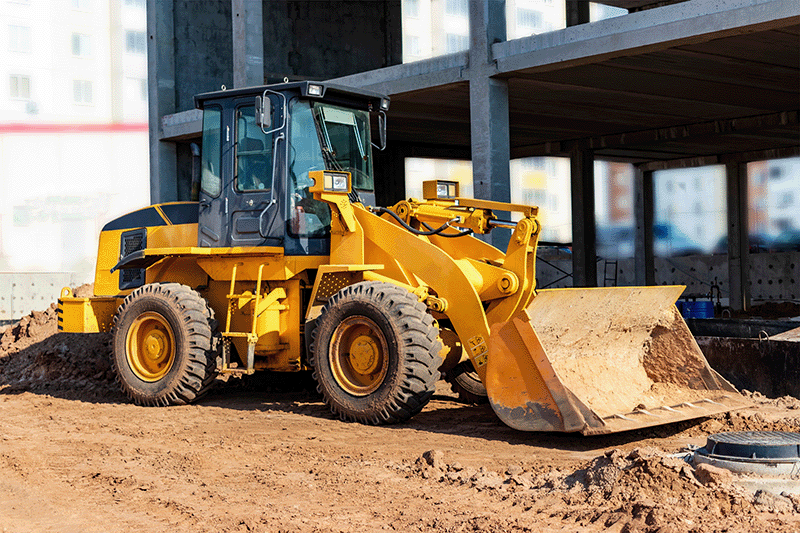Partner with Downstream

When it comes to wheel loaders, size isn’t just a number—it’s a critical factor in how efficiently, safely, and profitably your operation runs. Whether you’re feeding a crusher, managing a stockpile, or clearing a lot, choosing the right size loader is about more than just horsepower and bucket specs. In this guide, we’ll explore how to size a wheel loader based on your application, with real-world examples that show the impact of getting it right—or wrong. You’ll also learn how different industries prioritize loader specs like breakout force, lift height, and travel speed.

A wheel loader is a high-powered, front-end loading machine designed to scoop, lift, and move materials like soil, gravel, aggregate, and debris. They are widely used in construction, mining, material handling, and industrial applications.
The key sizing metrics for wheel loaders include:
Instead of one-size-fits-all, wheel loaders are best selected based on bucket capacity and site conditions. Here’s a breakdown of common size ranges and where they typically perform best:

On most commercial job sites, flexibility is key. A wheel loader in the 2.0 to 2.5 cubic yard range provides enough capacity to load standard dump trucks while staying nimble enough to operate in tighter site conditions.
Real-world example: A contractor working on a warehouse build in Dallas rents a Caterpillar 926M with a 2.5 yd³ bucket to shuttle base material from stockpile to the pad site. It’s small enough to maneuver around steel framing crews but large enough to keep pace with concrete pours.
In gravel pits and crushing operations, high-volume movement is the goal. Wheel loaders in the 3.5 to 4.9 yd³ range offer the horsepower and breakout force needed to handle dense material quickly.
Real-world example: A materials yard in Ohio runs a Volvo L180H with a 4.8 yd³ bucket to move limestone from stockpile to conveyor. The machine’s reach and high dump height are ideal for loading large-capacity haul trucks with minimal spillage.
In waste and recycling yards, you need height more than capacity. Loaders with high-lift arms and mid-size buckets are the go-to choice for dumping into high-walled trailers and bins.
Real-world example: A recycling facility in San Diego uses a John Deere 624L HL with a 3.2 yd³ bucket and high-lift linkage to load top-feed sorting conveyors. The operator likes the machine’s visibility and smooth controls in a cluttered yard.
In infrastructure work, a loader must be compact enough to travel haul roads and strong enough to load dense material. Machines in the 2.5–3.4 yd³ class hit that balance.
Real-world example: A highway paving crew in Georgia uses a Komatsu WA270-8 with a 2.5 yd³ bucket and quick coupler to switch between a general-purpose bucket and pallet forks. Its travel speed and ground clearance help the team move efficiently across a long, narrow jobsite.
Check the loader’s dump clearance to ensure it can reach over the side of your trucks or bins. If it can’t clear the edge, you’ll need to invest in high-lift arms or reconfigure loading areas.
For soft or uneven terrain, larger tires or articulated steering may be necessary. This can affect the size class you choose, especially on rural or undeveloped jobsites.
Need forks? Snow pusher? Pipe grapple? Make sure your loader is equipped with the right coupler system and has enough hydraulic flow to run the attachments effectively.
If you’re trying to match loader size to job specs, rental is a smart way to test what works before making a capital investment. At Downstream, we offer a wide selection of wheel loaders, categorized by bucket capacity so you can find the right fit fast.
Whether you’re hauling stone in a quarry or leveling fill on a jobsite, Downstream connects you with top-tier equipment from Caterpillar, John Deere, Volvo, Komatsu, and other trusted manufacturers. Our team can help size your machine based on project scope, material type, and site layout.
Explore available wheel loaders: https://trydownstream.com
Selecting the right wheel loader size means knowing your material, understanding your production goals, and anticipating on-site logistics. Over-sizing leads to wasted fuel and poor maneuverability. Under-sizing creates bottlenecks, slows down cycles, and strains your operators.
By thinking beyond just bucket size—and factoring in the unique challenges of your application—you’ll make a more informed decision that saves time, money, and effort.
Need help finding the perfect match? Reach out to Downstream and let’s make equipment rentals work smarter for your jobsite.
-min.webp)
Quis nostrud exercitation ullamco laboris nisi ut aliquip ex ea commodo consequat. Duis aute irure dolor in voluptate.
